Dave Ulrich: The impact of human capability on productivity and cash flow
- 6 Min Read
HR thought leader Dave Ulrich shares his recent research with The Conference Board on delivering stakeholder value through investments in human capability.
- Author: Dave Ulrich
- Date published: Jan 24, 2023
- Categories
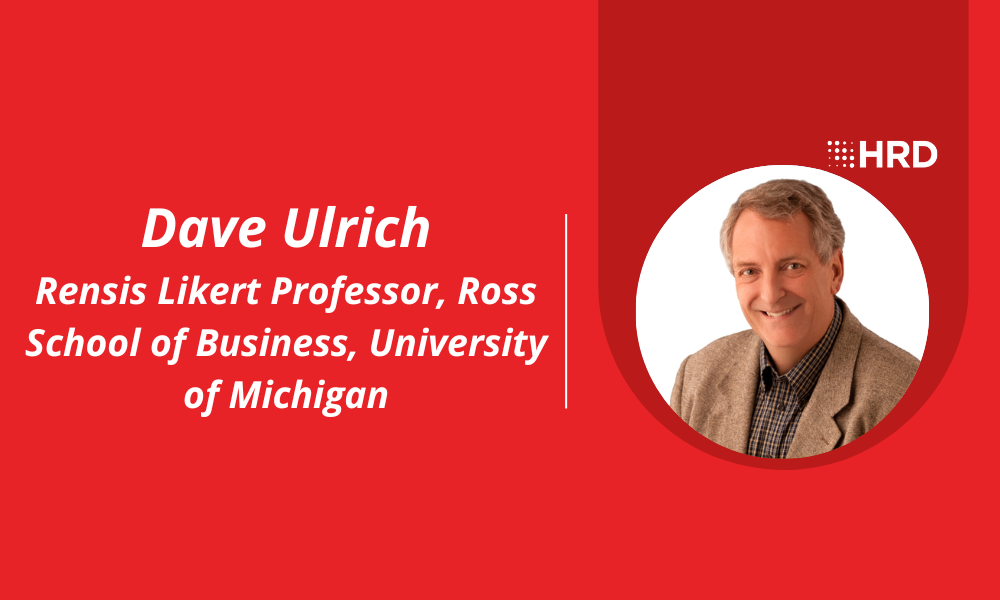
Like many others, we have spent our career seeking to discover how to create value for all organization stakeholders, both inside (employee fulfillment and strategic realization) and outside (customer share, investor confidence, and community reputation), through people and organization practices. This elusive, but relevant, aspiration has inspired ideas, research, and experiments. Our efforts to define the impact of human capability have led us closer to this holy grail. We have seen marked progress on three efforts: Outcomes, frameworks, and research.
Human capability is delivering outcomes that matter
Because of technology, political, demographic, and social contextual changes, about 80 percent of firms’ market value today comes from intangibles (up from 20 percent in the last twenty years). Intangibles represent the ability to adapt to these changes. Further, access to funding, strategic declarations, and digital innovations are less differentiating than the ability to manage people and organizations.
As a result of these contextual changes and competitive demands, HR (broadly defined) is less about HR itself. It’s more about the outcomes of doing HR work. For example, good people and organization work is less about the number of days of training, CEO-to-employee pay ratio, time to hire, workforce policies, or other initiatives. It is more about the impact on customers, investors, and communities. Simply stated, if an organization fails in the marketplace, it has no workplace.
This focus on outcomes more than activities makes people and organization investments more relevant, and even material, to investors, boards, and senior executives. The recent U.S. Securities and Exchange Commission (SEC) requirement to disclose human capital in regulatory reports signifies the increasing interest in people and organization. With little direction about what to disclose, about 7,000 U.S. firms reported a host of initiatives and metrics in 2021.
The framework for progress
Because of the increased attention on people and organization issues, a wealth of ideas and actions—many of which do not focus on outcomes—have shallow or non-existent roots in previous work, lack research evidence to support them, and end up as shiny objects and fads. To counter this quick-fix mentality, we have been actively engaged in the last few years in three relevant and large research projects:
- HR Competency & Capability Study, concluding the eighth round of data in 2021 with 28,500 respondents (over 120,000 people surveyed over the life of the study).
- Organization Guidance System with over 1,000 companies.
- Governance and Guidance for Growth through Human Capability (G3HC, with 7,000 companies).
From this research and our experiences, we propose a simple but integrated framework for the HR field: Human Capability (talent + leadership + organization + HR department).
- Human refers to talent (human capital, employee, workforce, people, competence).
- Capability refers to organization (team, workforce, capability).
- Leadership bridges the two.
- HR function refers to the HR department, practices, and people that deliver value.
This Human Capability framework clarifies and evolves the HR profession (see figure 1 for the evolution of the field).
The human capability pathways
Investors, boards, and business leaders can explore each of the four Human Capability pathways and link them to stakeholder outcomes. HR professionals, as architects, can diagnose performance in each pathway and offer blueprints for progress.
Innumerable innovations exist in each of these four pathways (see figure 2 for thirty-seven initiatives across the four pathways). Having a way to integrate these initiatives allows organizations to progress in ways that build on each other rather than having isolated and often repackaged initiatives. These four pathways are like the four food groups that lead to many diets, the GAAP principles that shape financial decisions, or the big five personality traits that offer numerous personality assessments.
This “framing” of HR is encouraging and may become a foundation for the field. In any business discussion related to people and organization, these four pathways may be the basis for dialogue and investments.
Figure 1: The evolution of the HR Field to Human Capability
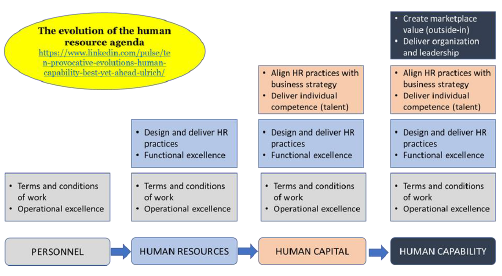
Figure 2: Thirty-Seven Initiatives in Four Human Capability Pathways
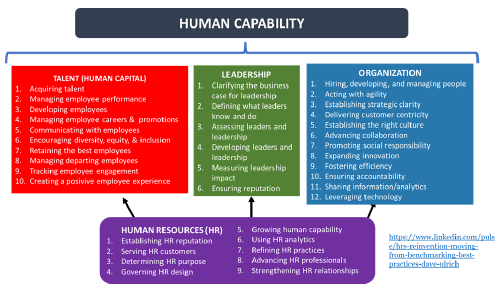
Research with actionable insights
Most efforts to assess the four pathways and thirty-seven initiatives come from surveys. These surveys ask respondents to offer their views on scripted questions. Surveys collect information but have response bias, limited information sourcing, and multi-collinearity findings. For research to lead to actionable insights, we access information with the advance of machine learning, AI, and natural language processing, which takes us beyond traditional surveys.
In partnership with Amazon Web Services AI experts, we were able to use machine learning and Natural Language Processing (NLP). We scored 7,000 organizations on the extent to which they disclosed efforts in each of the four pathways. For 5,700 of these firms, we were able to run predictive analytics about how Human Capability impacted employee, financial, and social reputation outcomes, both overall and in each of the four pathways.
Findings
Our findings are remarkable (see figure 3.) Human Capability scores explain:
- 44% of employee productivity.
- 26% of cash flow (EBITDA) (also 25% of market value over intrinsic value or intangibles [Tobin’s Q]).
- 36% and 48% of two social responsibility indicators.
These results are nearly double the industry average for the impact of Human Capability on these results as measured by surveys (figure 3). This validates the reliability of our Human Capability framework and the machine learning / AI methodology for explaining results.
Figure 3: Results of Human Capability on Key Outcomes
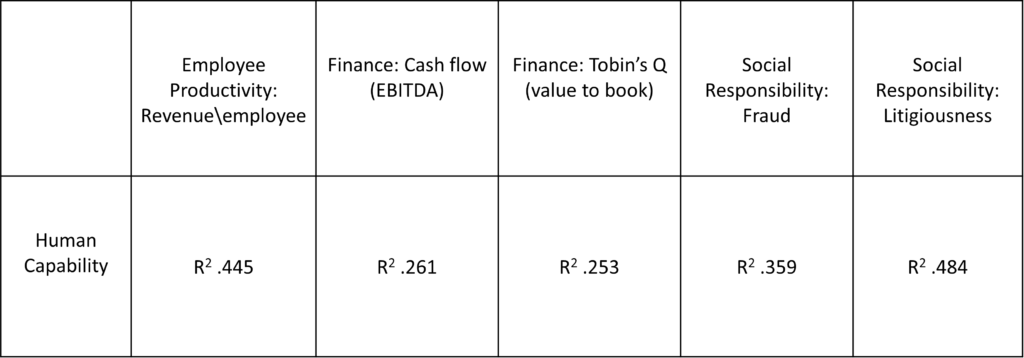
Investors, boards, senior business leaders, and HR professionals who seek higher confidence in employee, financial, and citizenship results should oversee and make informed Human Capability investments.
SEC human capital reports are not perfect sources of data on Human Capability. Companies differ on what they disclose because what they do, and how transparent they chose to be, differs. However, over time, the SEC reporting on Human Capability will evolve. Disclosures may eventually more closely match the rigor of financial, strategic, and risk management information.
Implications for HR Profession, your company, and you
We have called our work in this domain Governance and Guidance for Growth through Human Capability (G3HC). It provides a conceptual and empirical foundation to upgrade and evolve the HR profession by making progress on how Human Capability initiatives deliver value to all stakeholders and by informing SEC disclosures.
The work also helps any organization profile their current (see figure 4) and determine desired Human Capability investments to make intentional choices for improvement as well as what to disclose, drawing on thirty-seven actionable insights from our work.
Most importantly, this work helps business leaders and HR professionals make conscious Human Capability choices that help them be effective.
Figure 4: Company Profile on Human Capability Based on Disclosures
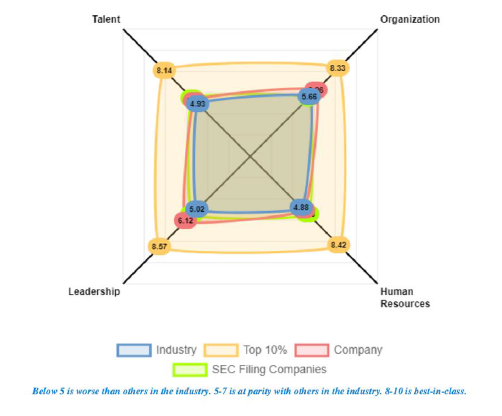
________________
To learn more, visit the G3 Human Capability website.
Dave Ulrich, PhD
Rensis Likert Professor, Ross School of Business, The University of Michigan
Co-founder and Principal, The RBL Group









